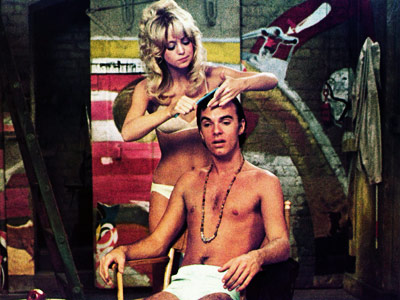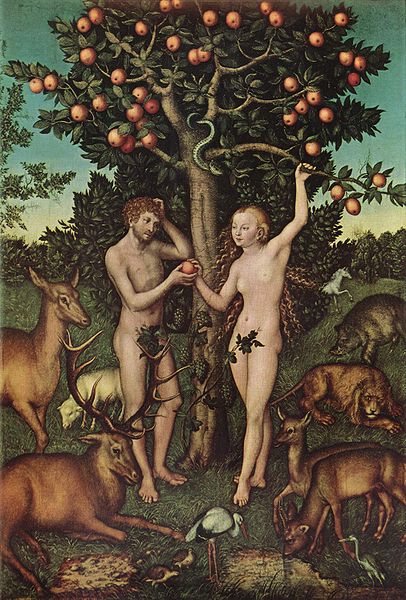The common features of human life have been around a long a long time. Around the block many, many times. Ever since humankind began to make a human world for its habitation, that world has been shared and divided along sexual lines. The male half, by an large by far has had the upper hand and established responsibilities and roles. Although there is much rhetoric about the “humanity” – perhaps simply a legal term- and the individual, the common way to divide is based on sex and not as fellow travelers. So enduring are these common features, and the stereotypes, and ingrained behavior they have spawned and mutated, that they have come to be seen as natural, right, and unalterable; a perception that they are a permanent expression of our deepest human nature….

Nathan Rabin:Then again, Sarandon's character is the very embodiment of gritty neo-realism compared to Kirsten Dunst's stewardess/love interest. Dunst embodies a character type I like to call The Manic Pixie Dream Girl (see Natalie Portman in Garden State for another prime example). The Manic Pixie Dream Girl exists solely in the fevered imaginations of sensitive writer-directors to teach broodingly soulful young men to embrace life and its infinite mysteries and adventures. The Manic Pixie Dream Girl is an all-or-nothing-proposition. Audiences either want to marry her instantly (despite The Manic Pixie Dream Girl being, you know, a fictional character) or they want to commit grievous bodily harm against them and their immediate family. As for me, well, let's just say I'm not going to propose to Dunst's psychotically chipper waitress in the sky any time soon. Read More:http://www.avclub.com/articles/the-bataan-death-march-of-whimsy-case-file-1-eliza,15577/
Sarkeesian: The Manic Pixie Dream Girl is a cute, bubbly, young (usually white) woman who has recently entered the life of our brooding hero to teach him how to loosen up and enjoy life. While that might sound all well and good for the man, this trope leaves women as simply there to support the star on his journey of self discovery with no real life of her own.Read More: http://www.feministfrequency.com/…”Though Dunst in Elizabethtown and Natalie Portman in Garden State epitomize the contemporary Manic Pixie Dream Girl, the strangely resilient archetype has its roots in the nutty dames of screwball comedy. For every era, there’s a Manic Pixie Dream Girl perfectly suited to the times. …Like the Magical Negro, the Manic Pixie Dream Girl archetype is largely defined by secondary status and lack of an inner life. She’s on hand to lift a gloomy male protagonist out of the doldrums, not to pursue her own happiness. In the late ’60s and early ’70s, MPDGs often took the comely form of spacey hippie chicks burdened with getting grim establishment types to kick back and smell the flowers. In that respect, they mirrored mainstream culture’s simultaneous suspicion and fascination with the open sexuality of the emergent counterculture. …( but what do these women ultimately want?)… As is usual with Manic Pixie Dream Girls, the filmmakers don’t seem to have given the matter much thought. http://www.avclub.com/articles/wild-things-16-films-featuring-manic-pixie-dream-g,2407/ a

"Hawn began her acting career playing the ditz on TV comedies like Good Morning World and Laugh-In, but by the end of the '60s, her bubble-headed persona became less a figure of fun and more a love-generation ideal. She was the uncomplicated free spirit, unduly hassled by the establishment. Hawn won an Oscar for bringing that character to film in 1969's Cactus Flower, and then in 1972's Butterflies Are Free, she played a happy hippie who helps blind lawyer Edward Albert learn to live on his own and stand up to his fretful, frightful mother. Hawn's boyfriend doesn't care for her friendship with Albert, but what can he do? Hawn is a butterfly, man." Read More:http://www.avclub.com/articles/wild-things-16-films-featuring-manic-pixie-dream-g,2407/ image:http://www.ew.com/ew/gallery/0,,20300133_20662634,00.html
That this situation is attacked in the name of liberty and justice is entirely reasonable. Why isn’t the outrage more widespread? The critique that a white male patriarchal society is not natural but contrived, not right but oppressive, and certainly not unalterable is entirely fair. The ancient and radical injustice, the domination of females by males, is part of a well-grounded comprehensive challenge that spits at “normative” equality -essentially democracy based on property law- and called bunk much of what has passed for human wisdom. That is, a reordering of our basic institutions to meet the elementary needs of human life is in order. After a hundred years of women’s movement, the males is till the actor. And the creator, the keeper of cults, and the inventor of the taboos. He is concerned with most of what is specifically human in the human world, as opposed to what is merely natural, merely biological, merely concerned with life itself.

Lucas Cranach the Elder 1528. John Dyer:In his book I and Thou, Martin Buber wrote that we always exist in one of two relationships, I-Thou or I-It. Even though we talk about being “individuals,” Buber would say that no one exists in isolation as just an “I“, but instead “I” only exists in relationship to “the other.” The relationship of “I” to “the other” can take the posture of either I-Thou in which both individuals are full persons or I-It in which “I” treat “the other” as an object or a thing....Read More:http://donteatthefruit.com/2011/01/martin-buber-on-beautiful-girls-vs-sexy-gadgets/ image:http://traumwerk.stanford.edu/philolog/2009/09/lucas_cranach_the_elder_adam.html
Melanie Klein:I was encouraged to paint, surf, build forts and play with dolls. Some might conclude that I had an advantage in a family that did not enforce suffocating gender roles. And, to an extent, I did. But the love and support in my home wasn’t forceful enough to keep sexism and patriarchy at bay. Like a specter, patriarchy and it’s supporting ideology, sexism, crept into my life, my experience and my being.
By the time I entered Sociology 22, I had battled an ongoing eating disorder, been in a mentally and physically abusive relationship on and off for more than six years, been raped, dealt with an unplanned pregnancy and felt that I wasn’t smart enough to go to college despite a solid education. I was depressed, felt like a failure, felt without direction and, generally speaking, couldn’t imagine my self-esteem could dip any lower .
It’s not you. You’re not an isolated case. It’s systematic and it’s called patriarchy.
Learning about patriarchy, sexism, internalized oppression and the intersectionality of gender, race and class shook me to the core–and shook me out of my stupor. It allowed me to slough off the feeling of individual blame and guilt I carried. I felt as if someone had ripped away the “veil of illusion” that prohibited me from connecting my life to the lives of other women, and to the larger system of patriarchy. Read More:http://msmagazine.com/blog/blog/2011/03/31/click-its-not-you-its-patriarchy/
…The French existentialist Simone de Beauvoir pointed out in her “The Second Sex” , that it is the males who create the values by which life in any society is justified. “At no time has she ever imposed her own law,” she said. Even when men looked with awe upon the reproductive powers of f
es who worshiped the Earth Mothers in their image, it was the men who created the gods and established the hierarchy, according to James Frazer, a scholar on pagan religion, asserted almost 150 years ago. In this male-dominated world, human achievement is so much a male prerogative that we use the word man in speaking of humanity and not huwomanity.
As de Beauvoir emphasized, the male role in the family- basically valorized as an economic unit and medium by which to pass property from one generation to the next- is individual, active and open. The female role closed, and less individual. Her body, designed for childbearing, becomes within the family her “destiny” to which she is asked, or socially coerced into submitting. The traditional nuclear family was not a natural or biological institution. It, like organized religion which promotes it, is a human contrivance, and it invites the question why these roles and stereotypes; cultural archetypes are as they are. There are limits to biological necessity that go beyond mere “convenience”.
In the Aristotlean view, women suffered a “natural deficiency” in the ability to think, to act and to create. To much of those, what he considered a rational judgment, women have in part to blame to being allotted a short straw because of their “natural” incapacity to do much else. Obviously, there is no evidence of any inherent incapacity except perhaps for heavy lifting and grunt work and few meaningful achievements have been based on brute aspects.
Male chauvinism also owes much to Freud and his own infantile form of adult diaper rash; the presumed inherent temperament of females based on the notion of hysteria. Thus, family division of roles is based on fixed facts of life based on a synthetic psychological division. Freud even went so far as to construct an elaborate theory , based on the female’s discovery of her presumed anatomical deficiencies to explain why females manifest a submissive feminine personality.

---The master taught that women are far more masochistic and narcissistic than men and more prone to neurosis, that they are rigid and unchangeable by the age of 30, and unable to equal the high moral character of men. These doleful views flow from a single Freudian concept: penis envy. As Freud saw it, female identity grows from an infant girl's shocking discovery that she lacks a penis. Later, in about the third year of life, she carries this sense of castration and inferiority into the Oedipal cycle, blaming the mother for the loss of the penis, turning to the father as a love object, and converting the wish for a penis into a wish for a child. Childbearing and most of women's aspirations are thus, per Freud, attempts to compensate for the missing male organ, and penis envy becomes "the bedrock" of women's unconscious frustrations throughout life. Despite dissent from a few of his early follower—, Freud's views quickly hardened into psychoanalytic dogma. Now, under pressure from feminists, orthodox Freudians seem to be giving ground. "Anatomy is not destiny," says Psychoanalyst Robert Stoller, one of the voices for change. "Destiny is what people make of anatomy." Read more: http://www.time.com/time/magazine/article/0,9171,918601,00.html#ixzz1IVyeYRFT image:http://themurkynews.blogspot.com/2008/06/chapter-eleven-grand-tour-of-satans.html
ADDENDUM:
Dyer:This convergence of human extensions means that our devices are becoming more and more human-like every day, and that is precisely the reason people find it so easy to slip between interacting with them from an I-It posture to I-Thou. The smarter the smartphone, the more powerful the illusion that It has become Thou. As our phones gain more and more functions, even fun and useful ones like depositing checks and paying for Starbucks coffee, the stronger our connection with and dependence upon that device becomes….
…Yet just as Buber warned that taking an I-It posture toward another human being damages our souls, we must also recognize that taking the posture of I-Thou toward a device also harms our being. The more humanity and personhood we attribute to our devices the less we in turn retain. As our loves become more disordered so also our souls.Read More:http://donteatthefruit.com/2011/01/martin-buber-on-beautiful-girls-vs-sexy-gadgets/
Read More:http://www.southasiamail.com/news.php?id=83585
Read More:http://www.templeofearth.com/books/goldenbough.pdf








 COMMENTS
COMMENTS



